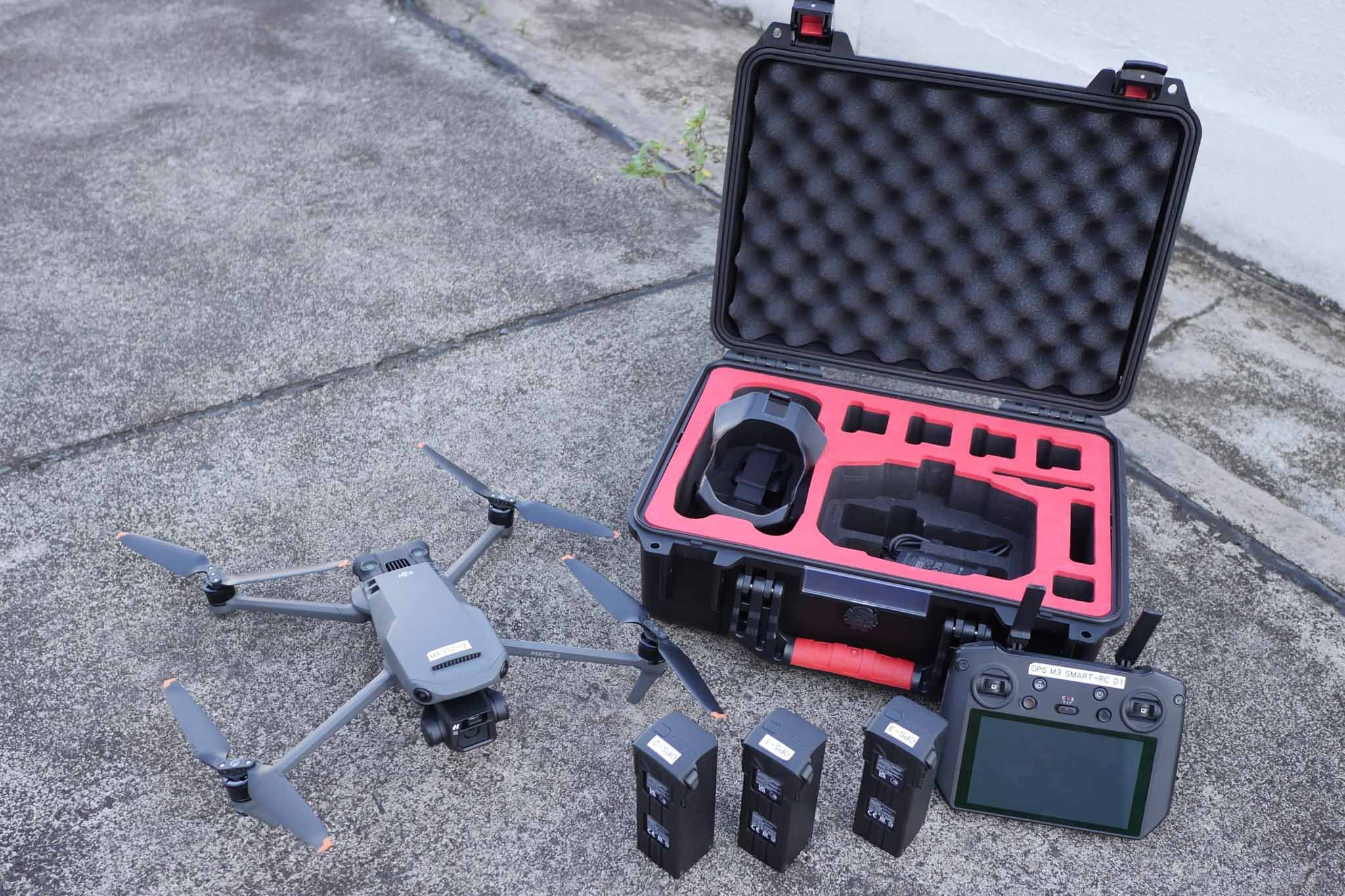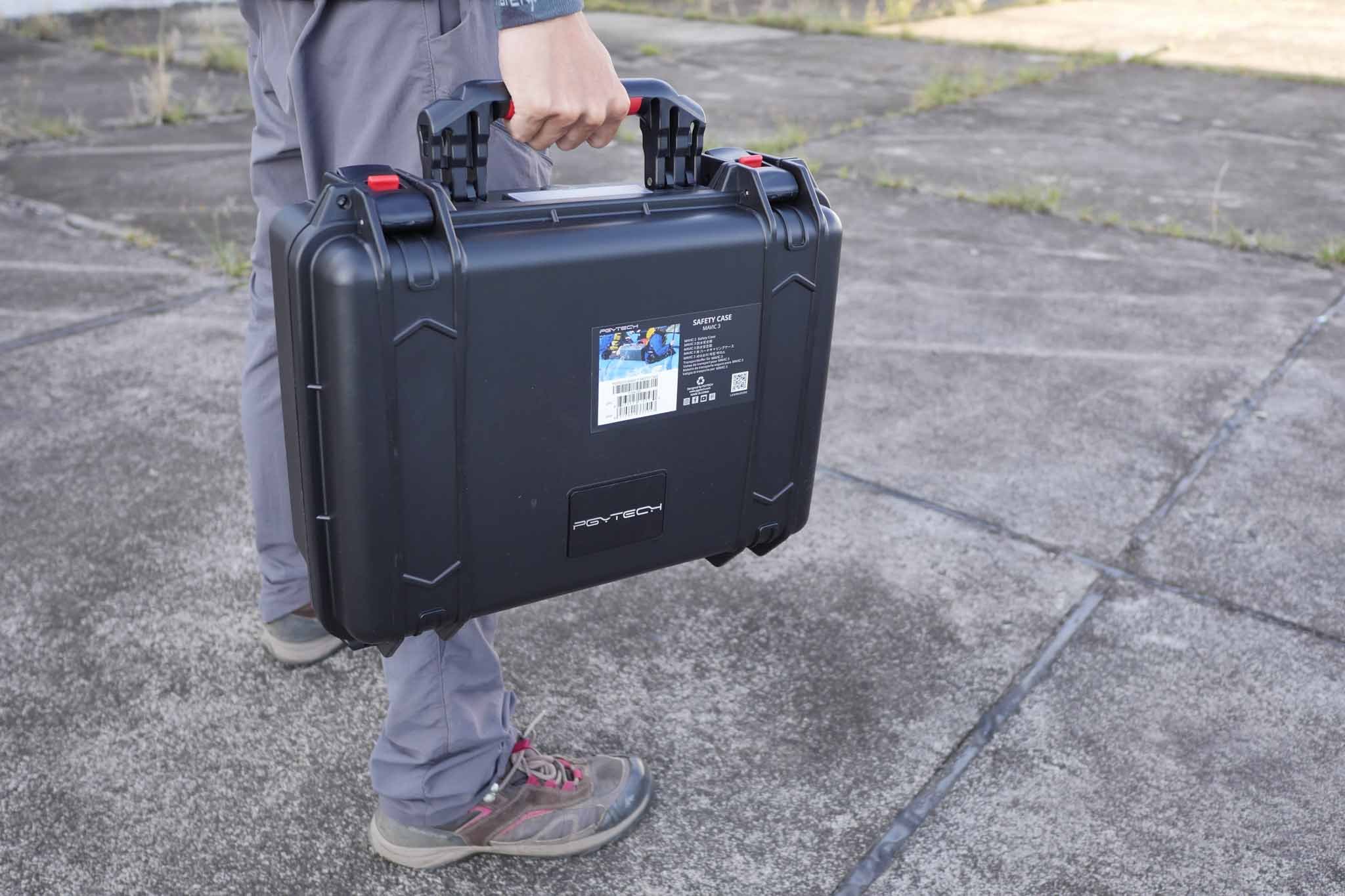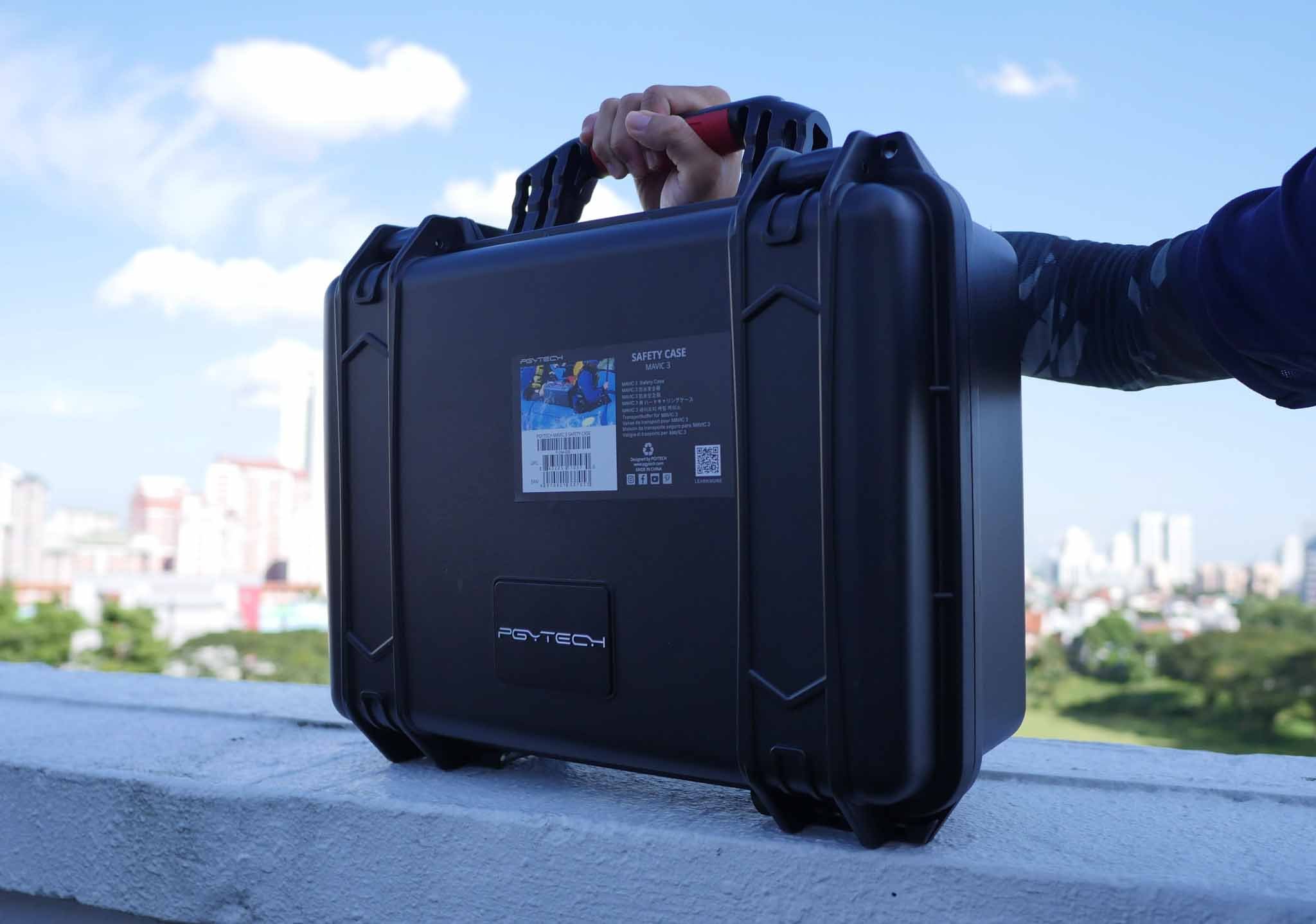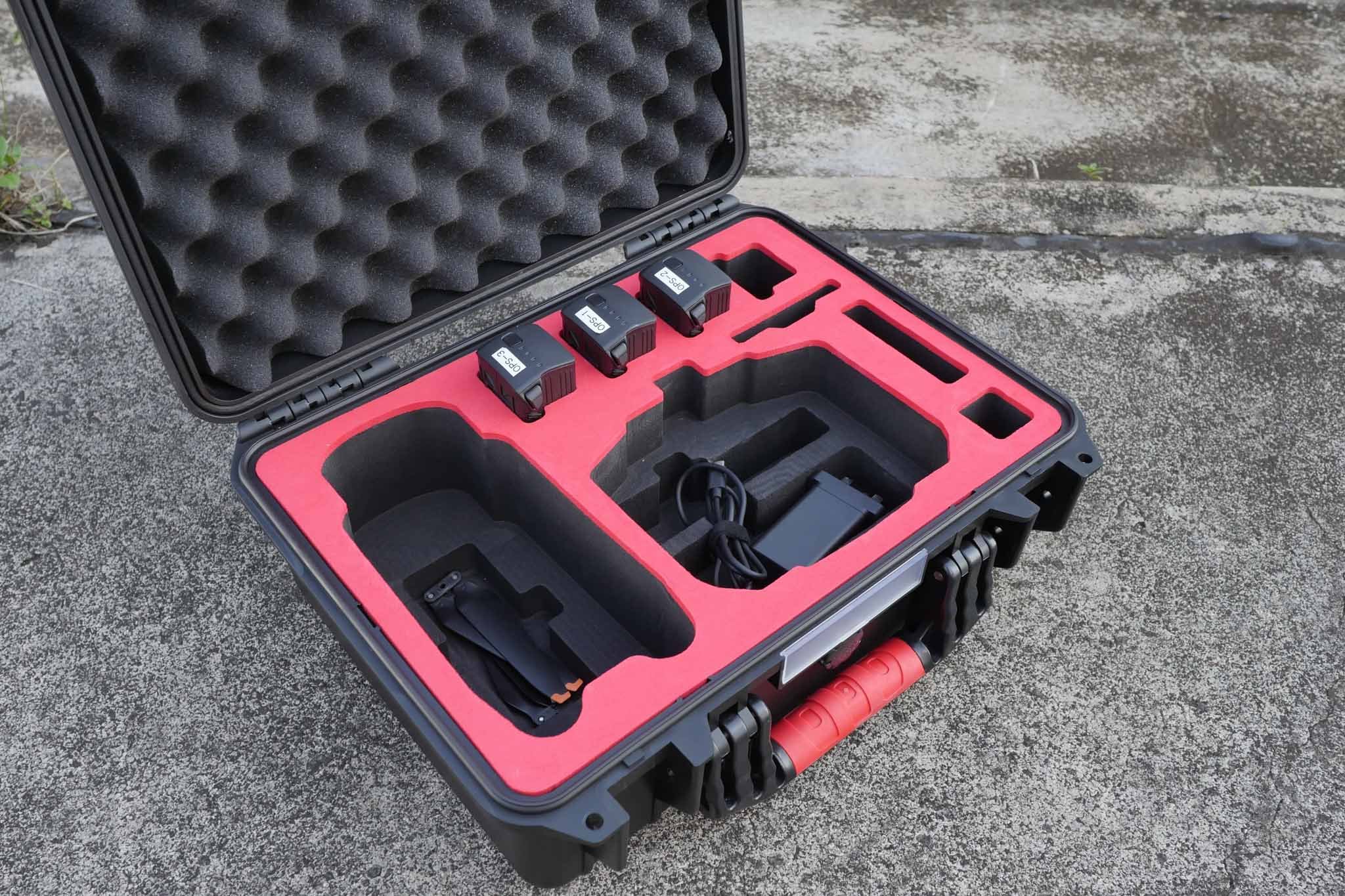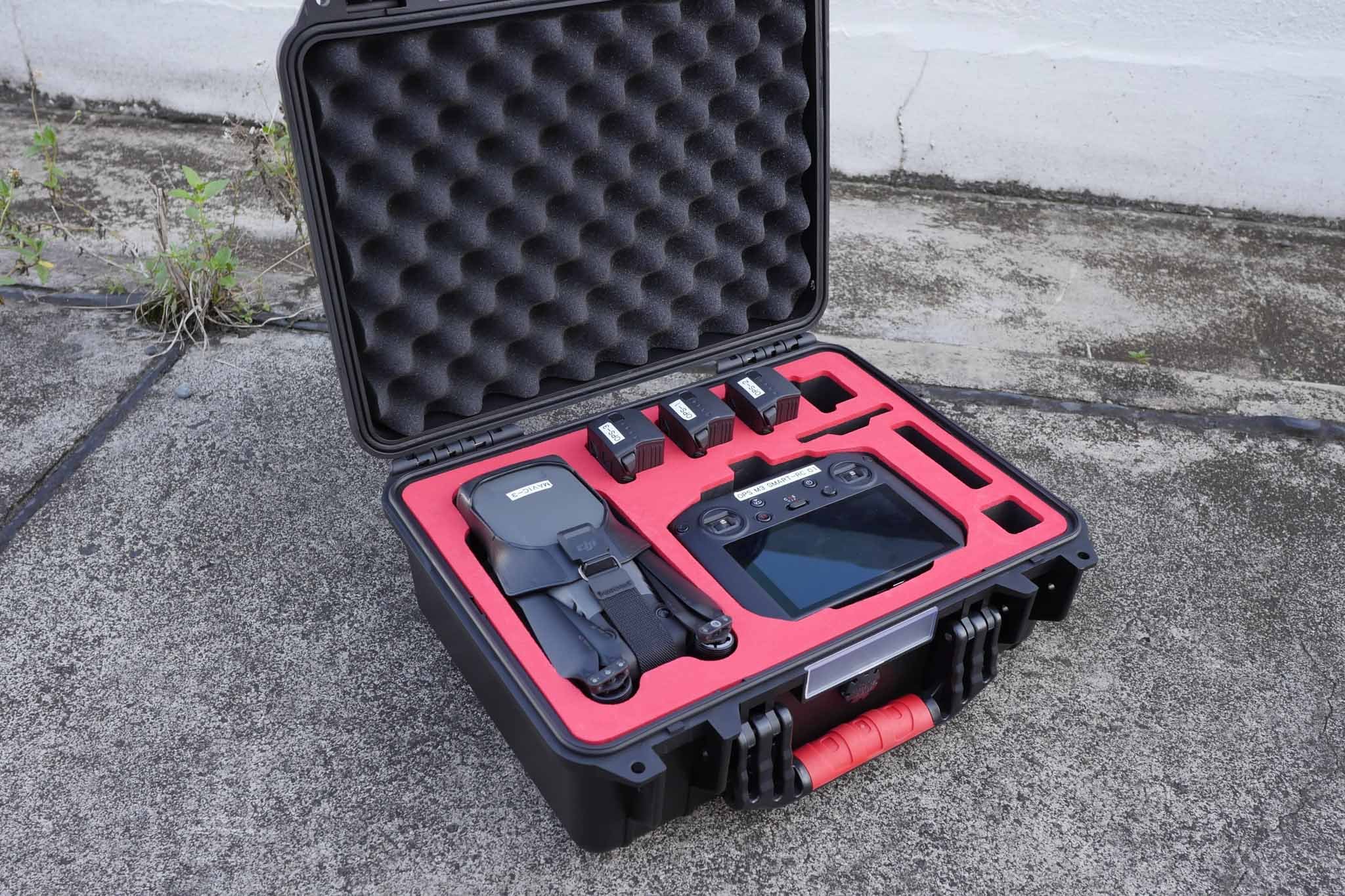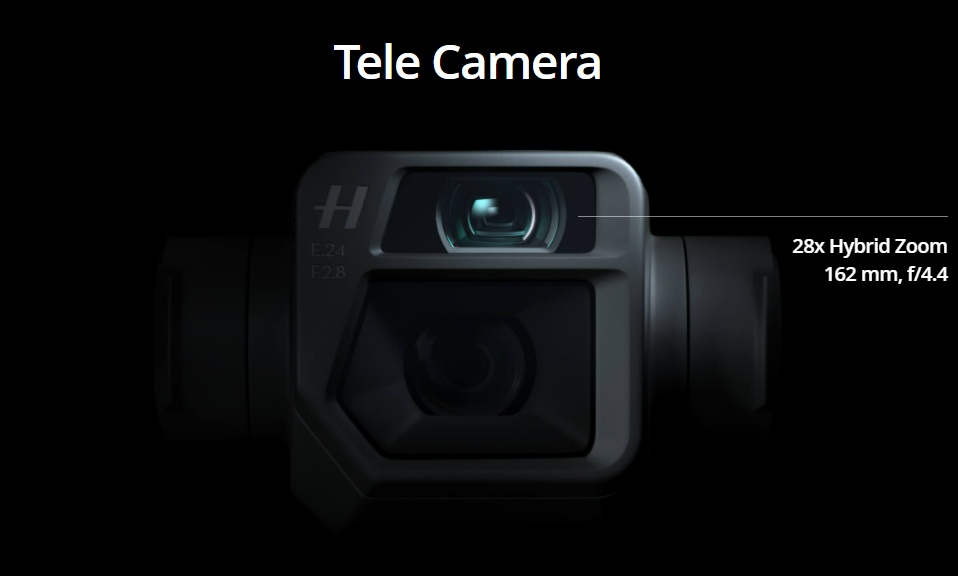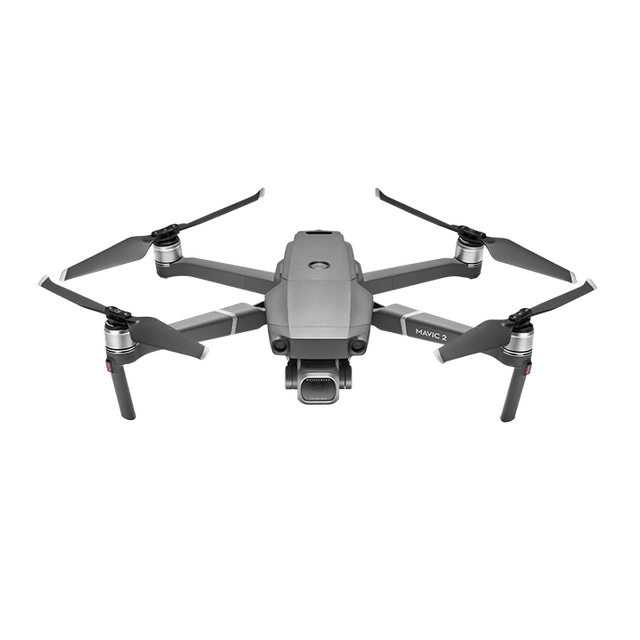

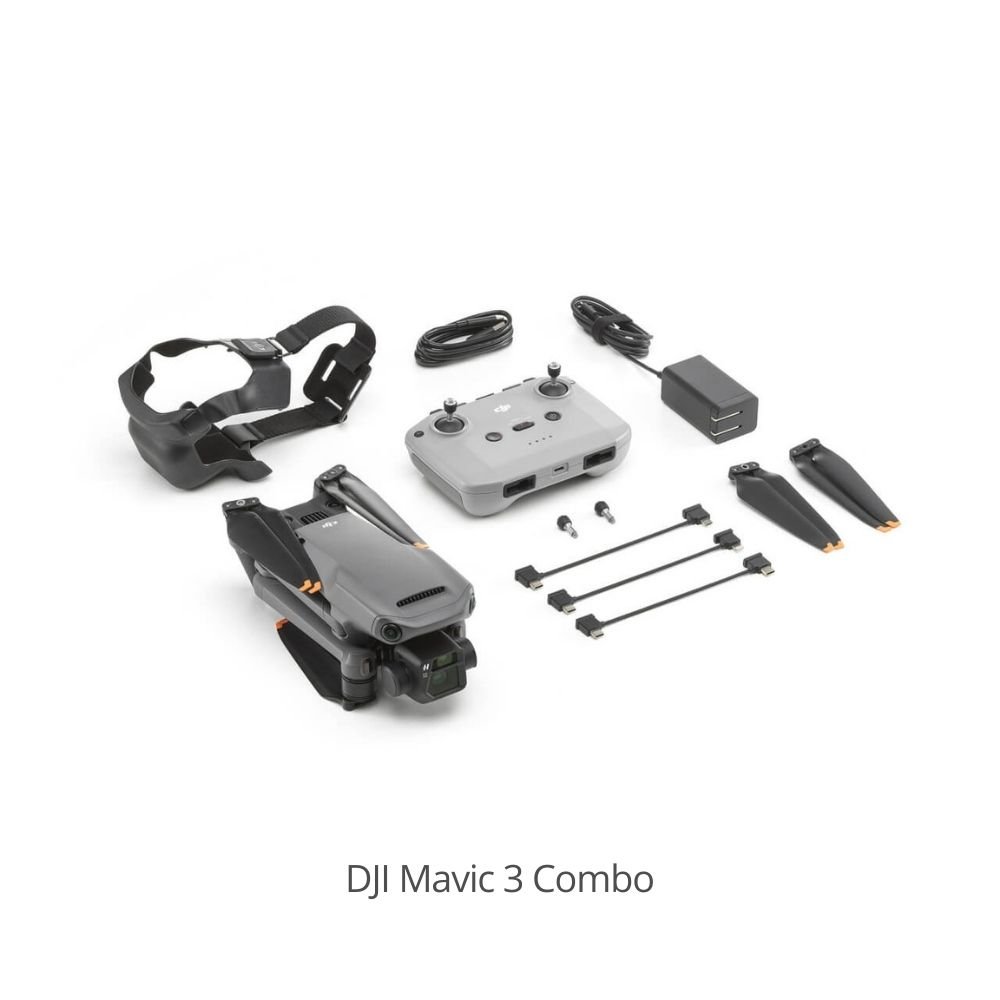
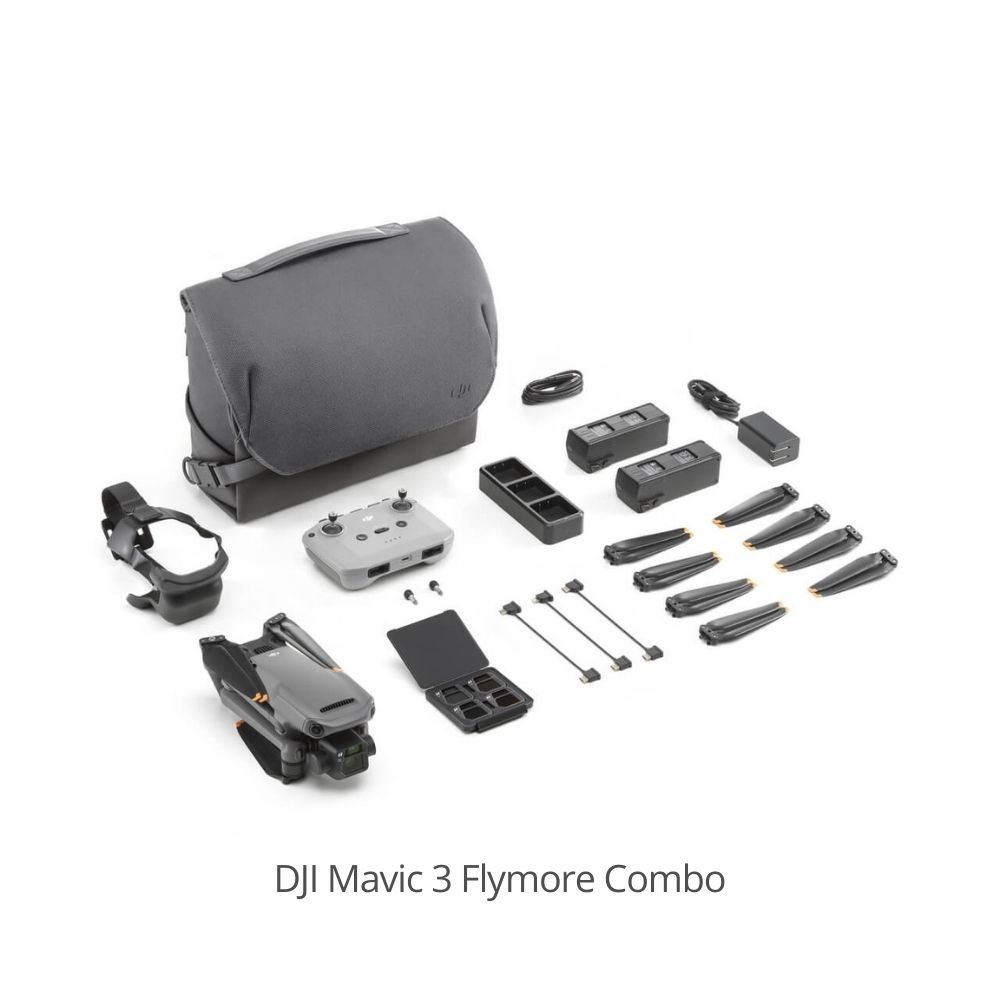
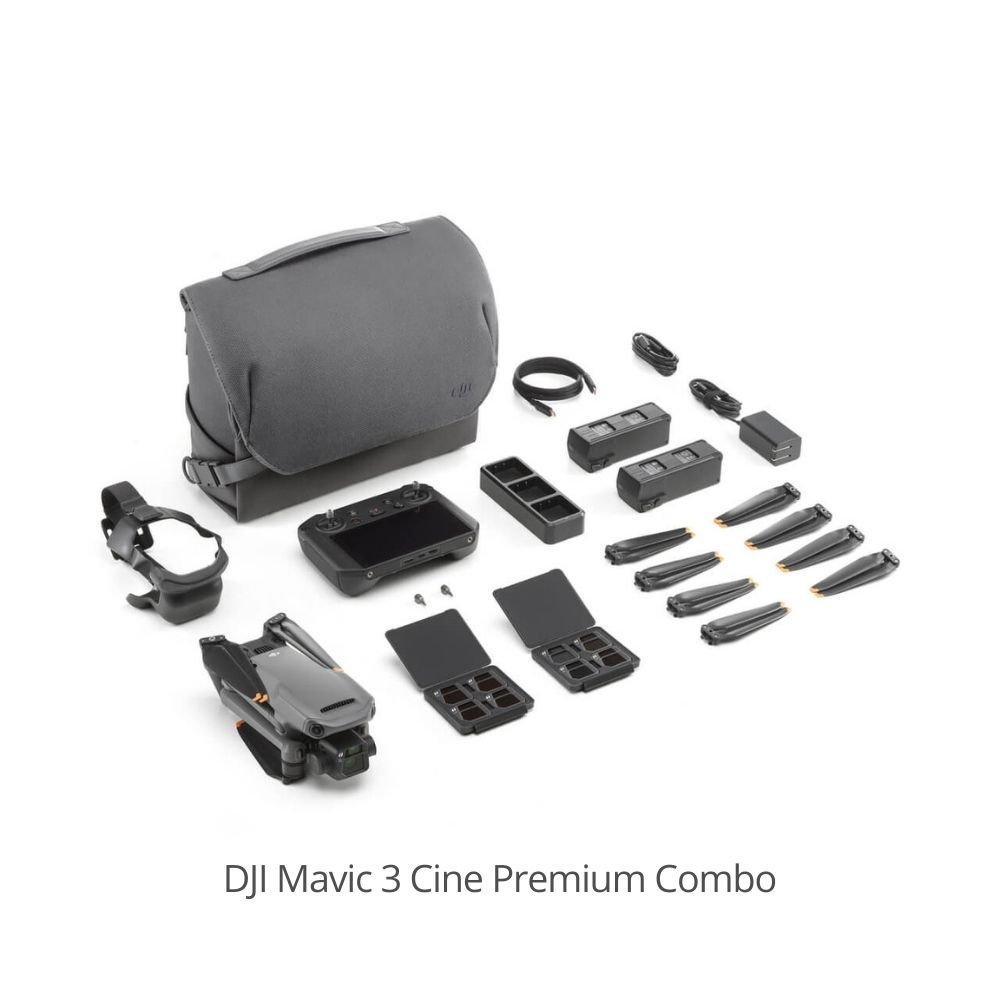
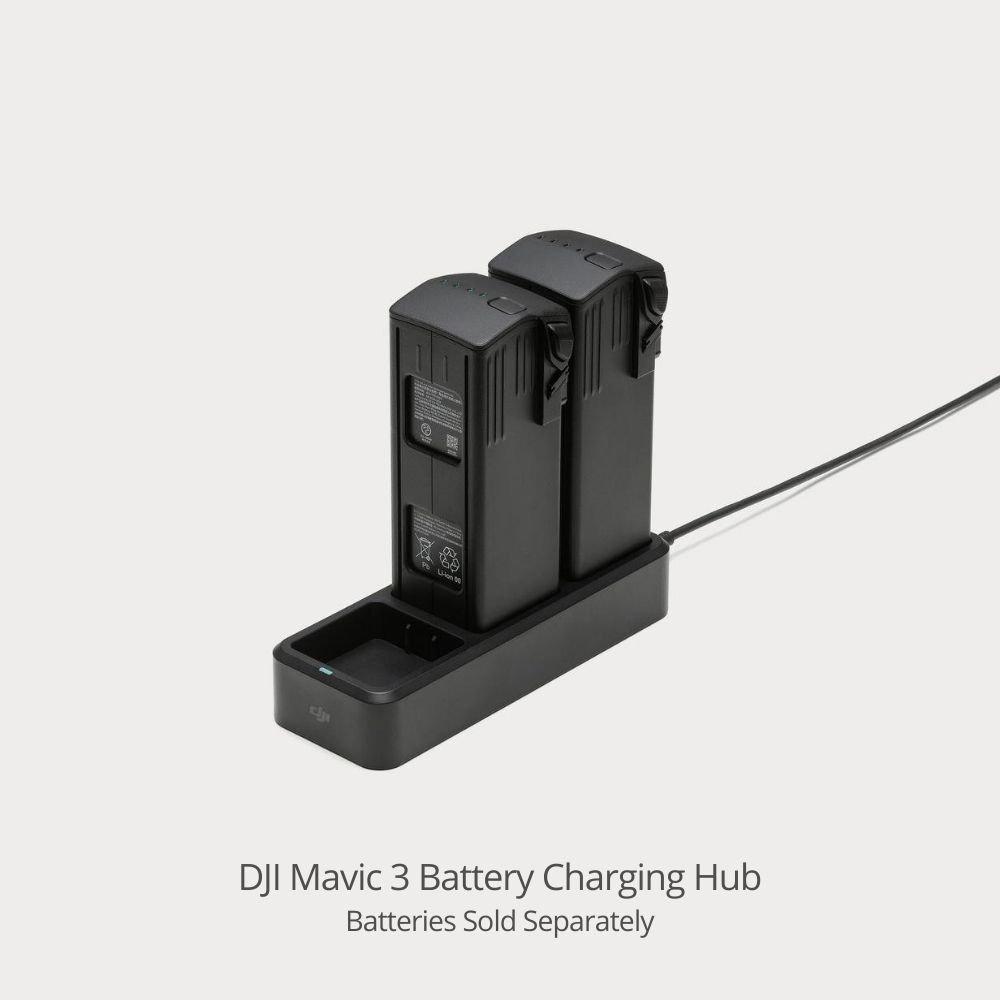
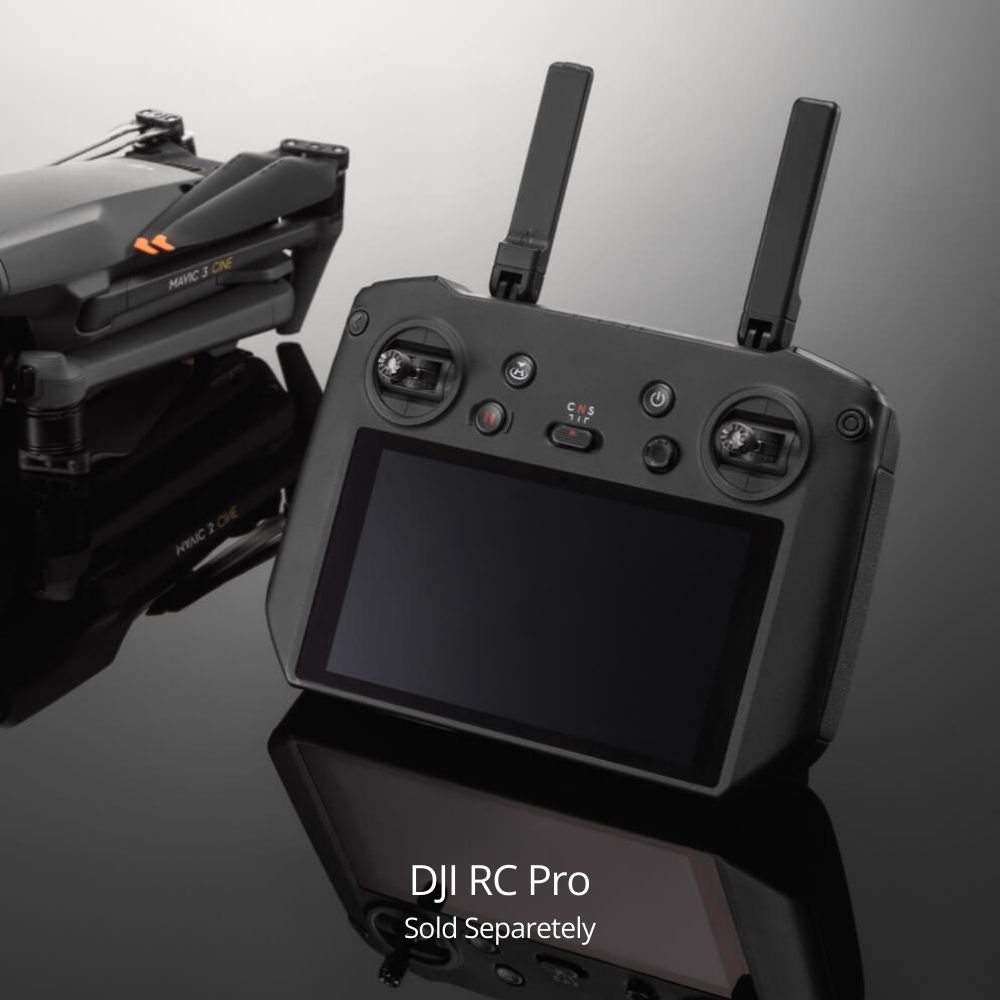
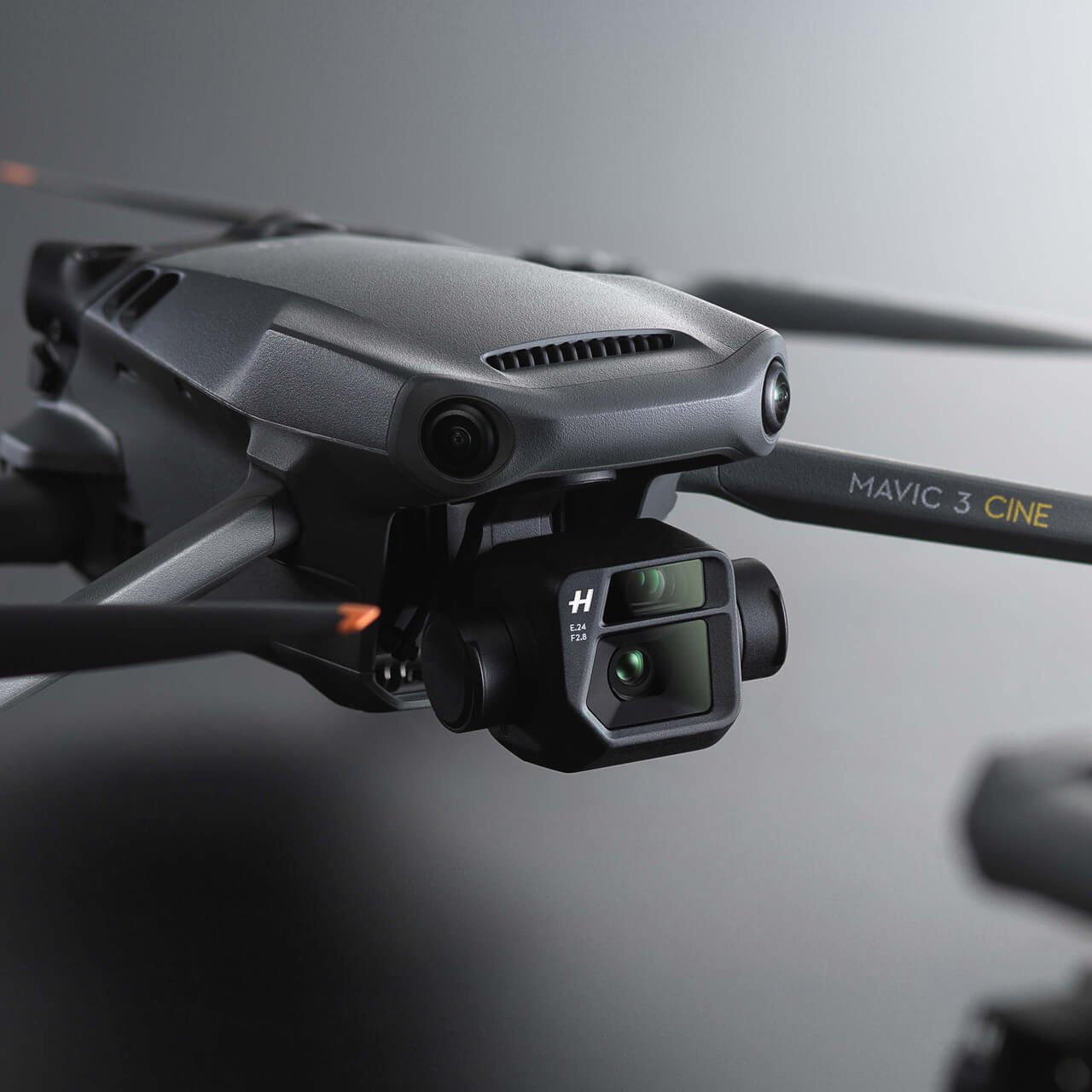
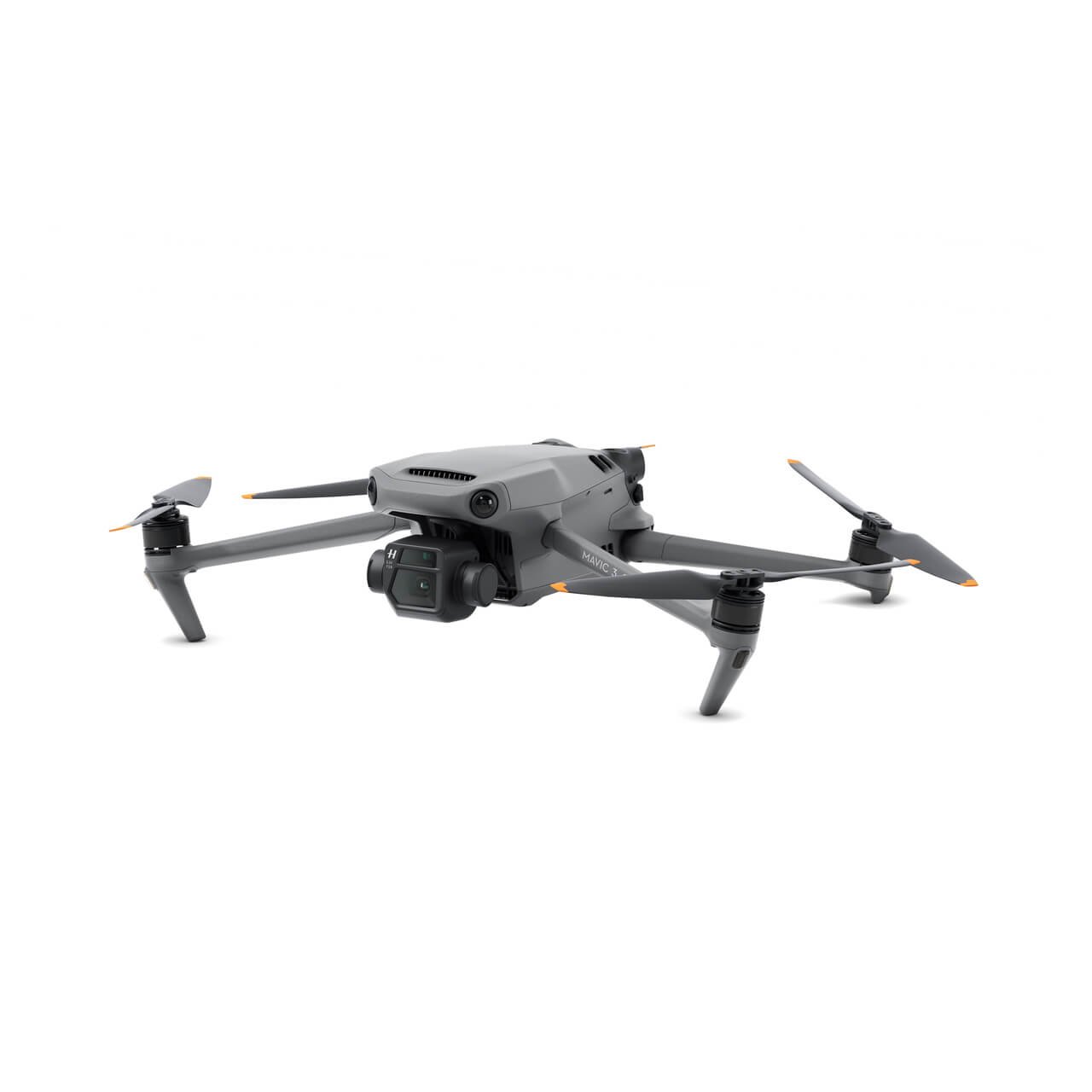
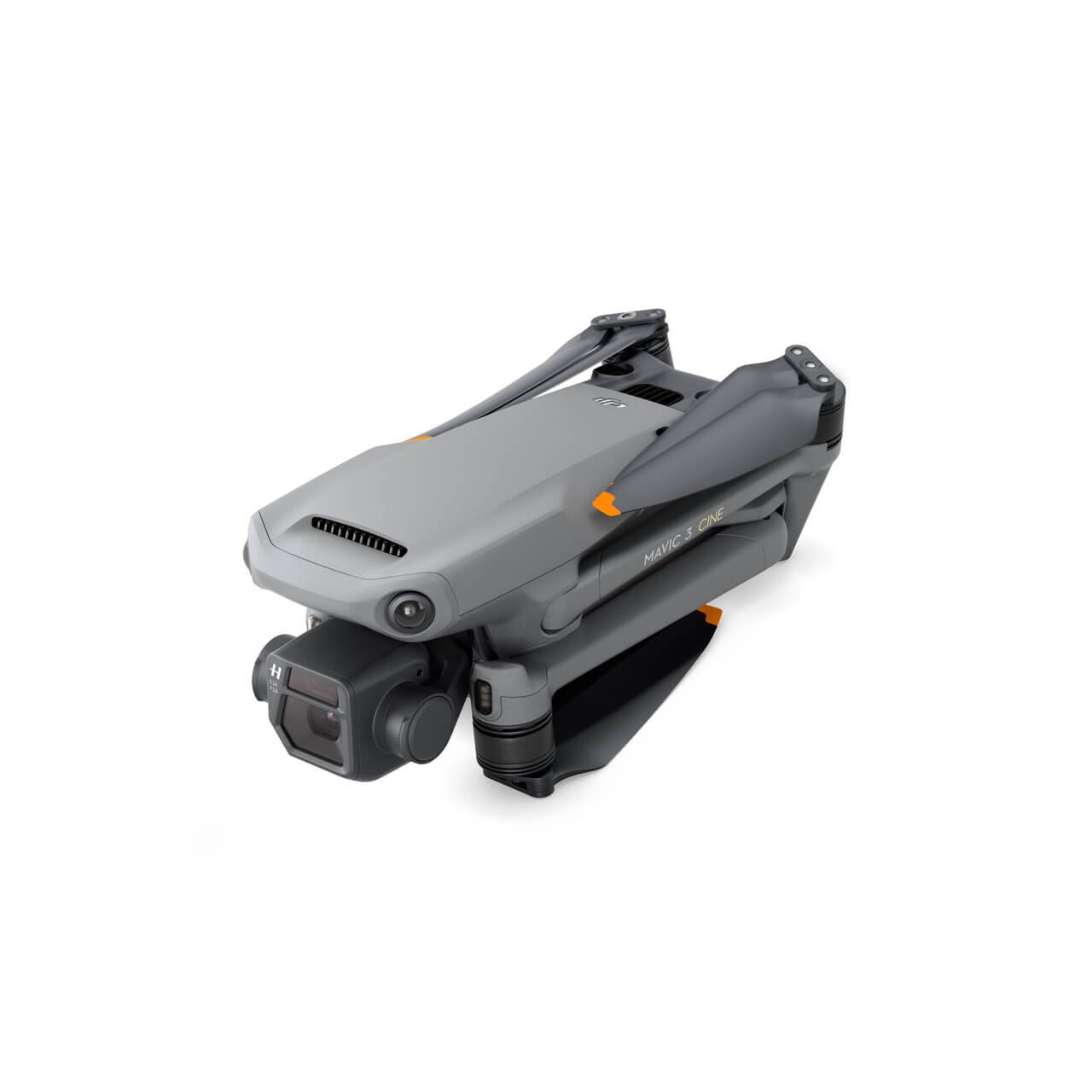
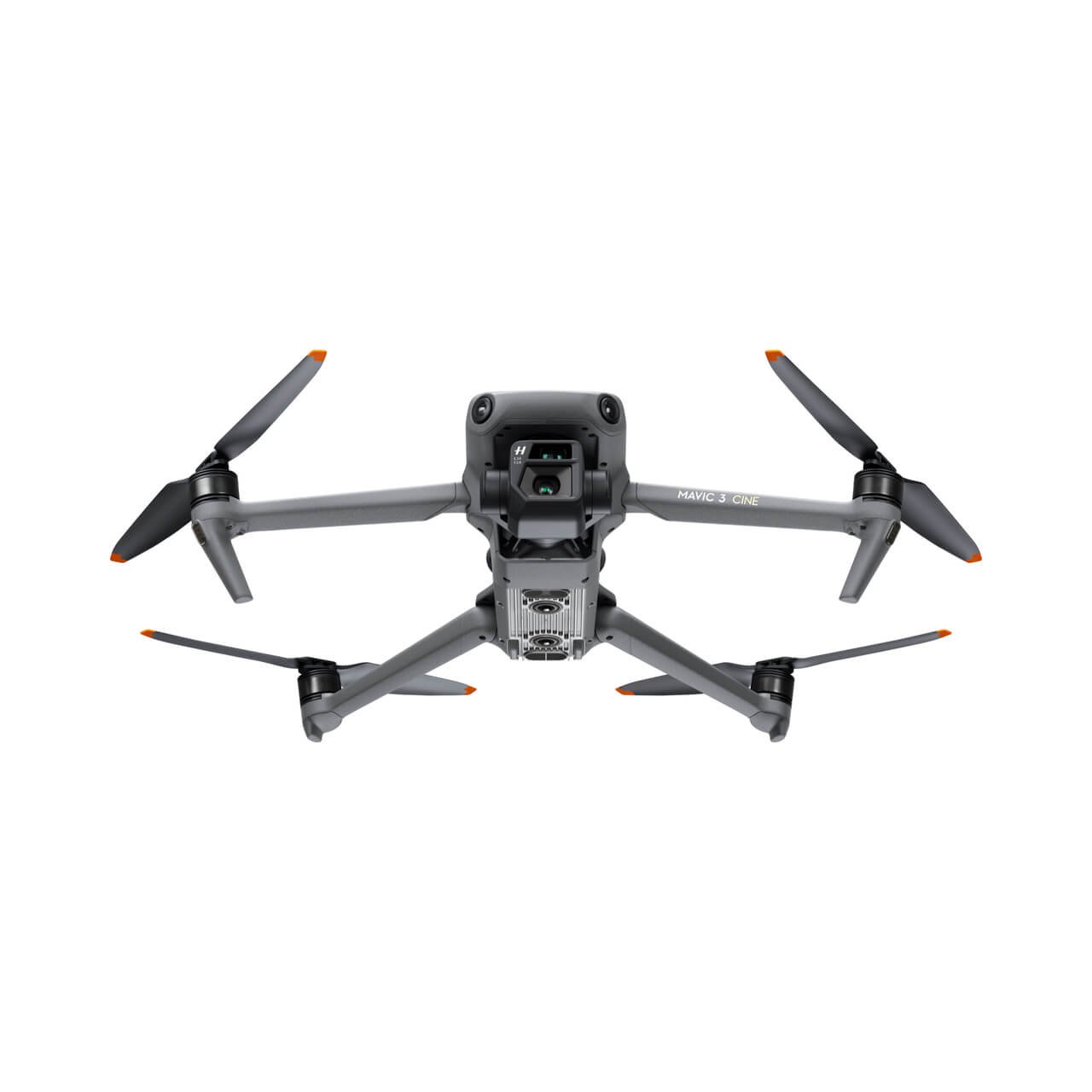
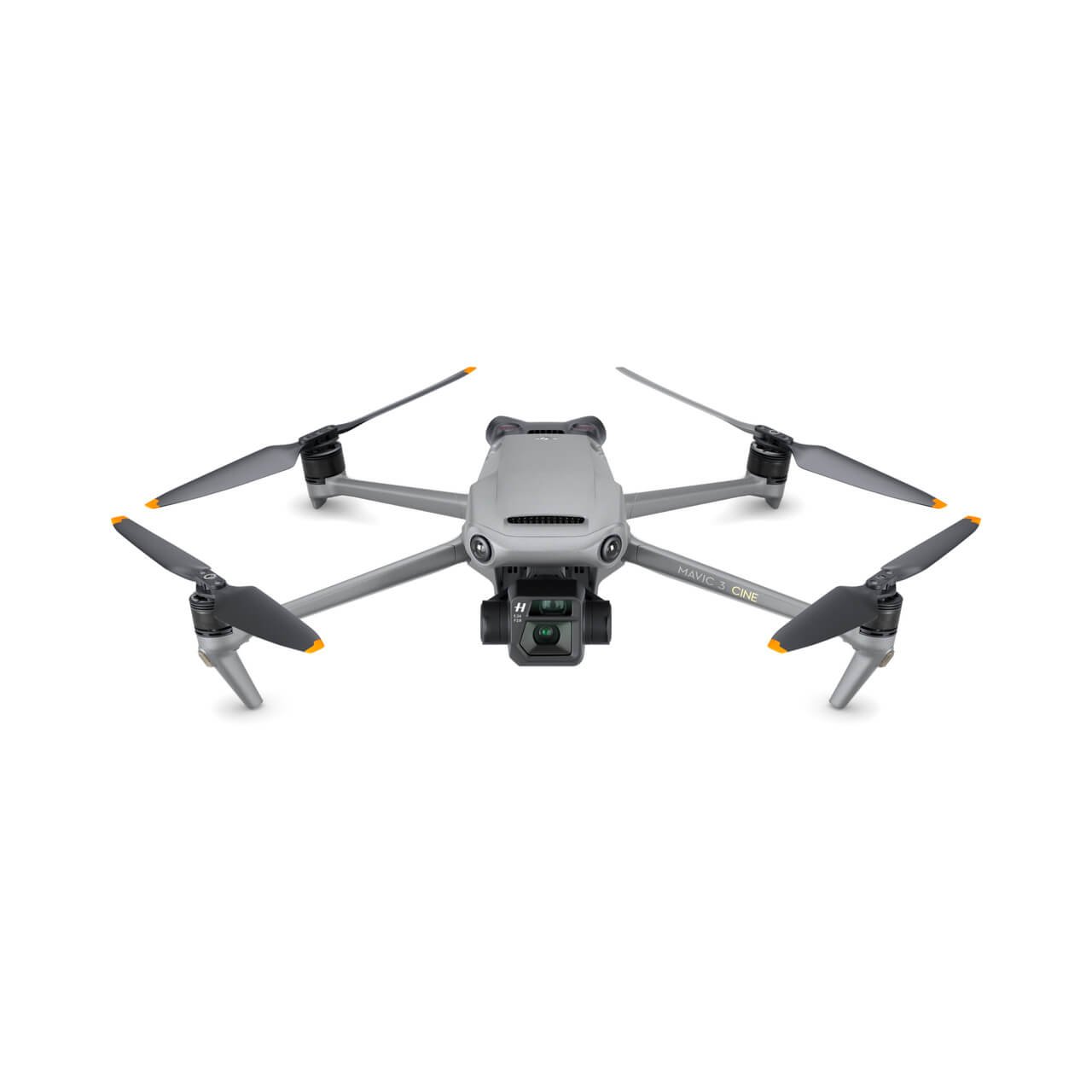
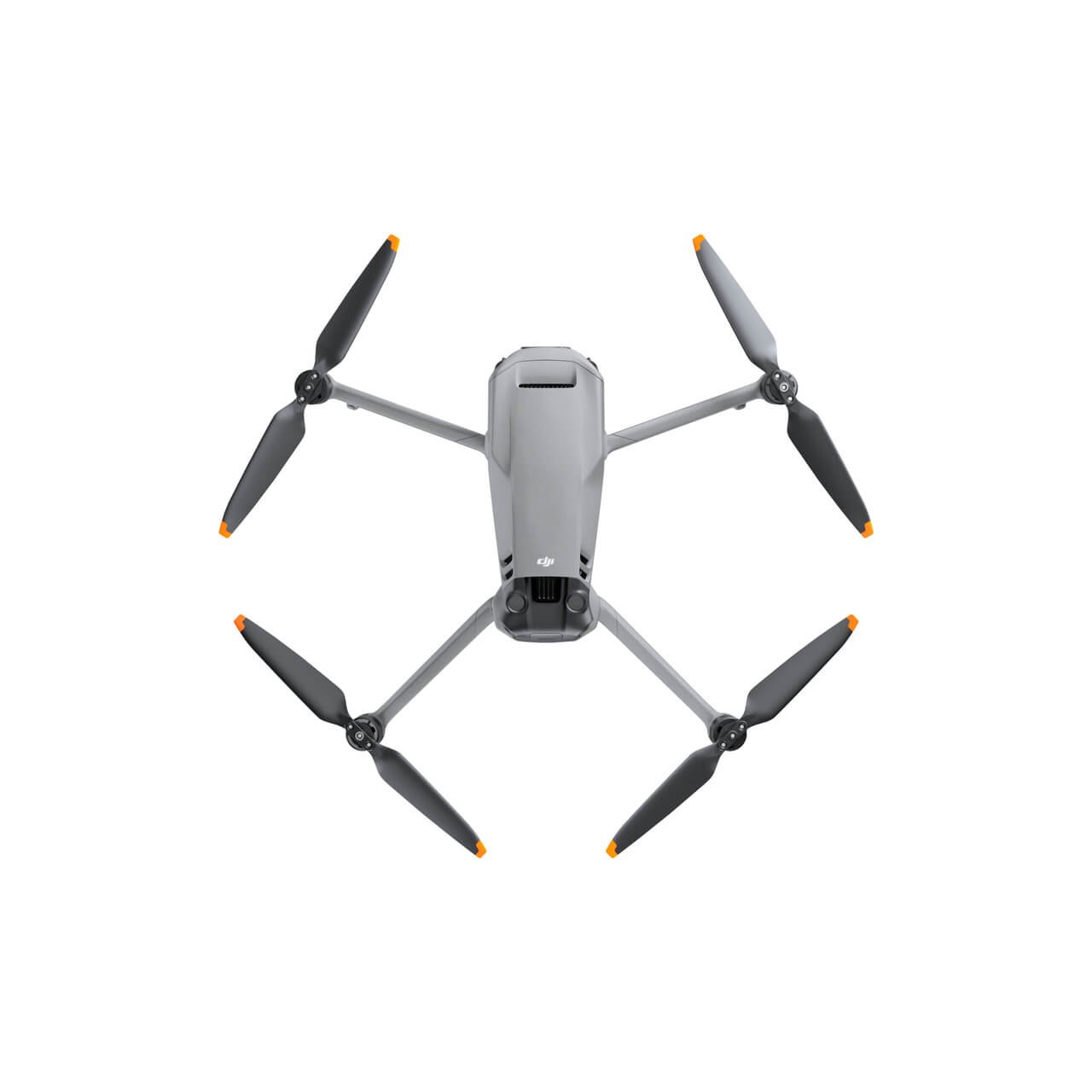
DJI’s Best Consumer Drone Yet
Everything is upgraded
New 4/3" Hasselblad Dual-Camera System
First DJI drone that can transmit live 1080p/60fps video from the drone to the controller.
46 minutes of flight time
Object detection from 0.5 to 200 meters.
#WorkMore Bundle Bonus! Custom Made Mavic 3 Safety Carrying Case
Create professional imagery with the Hasselblad L2D-20c camera system
20MP
12.8 Stops Dynamic Range
f/2.8-f/11 Adjustable Aperture
24mm Equivalent Focal Length
VDAF Vision Detection Auto Focus Technology
A larger sensor size keeps images clean in low light.
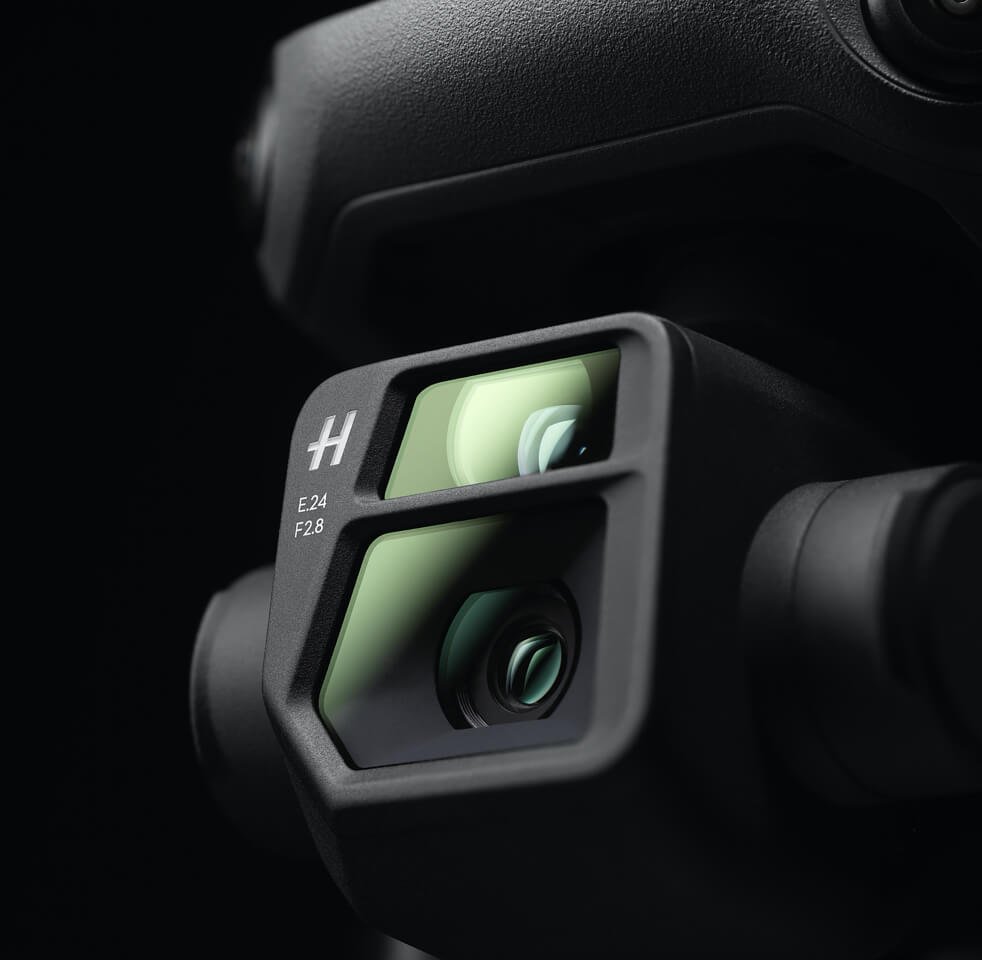
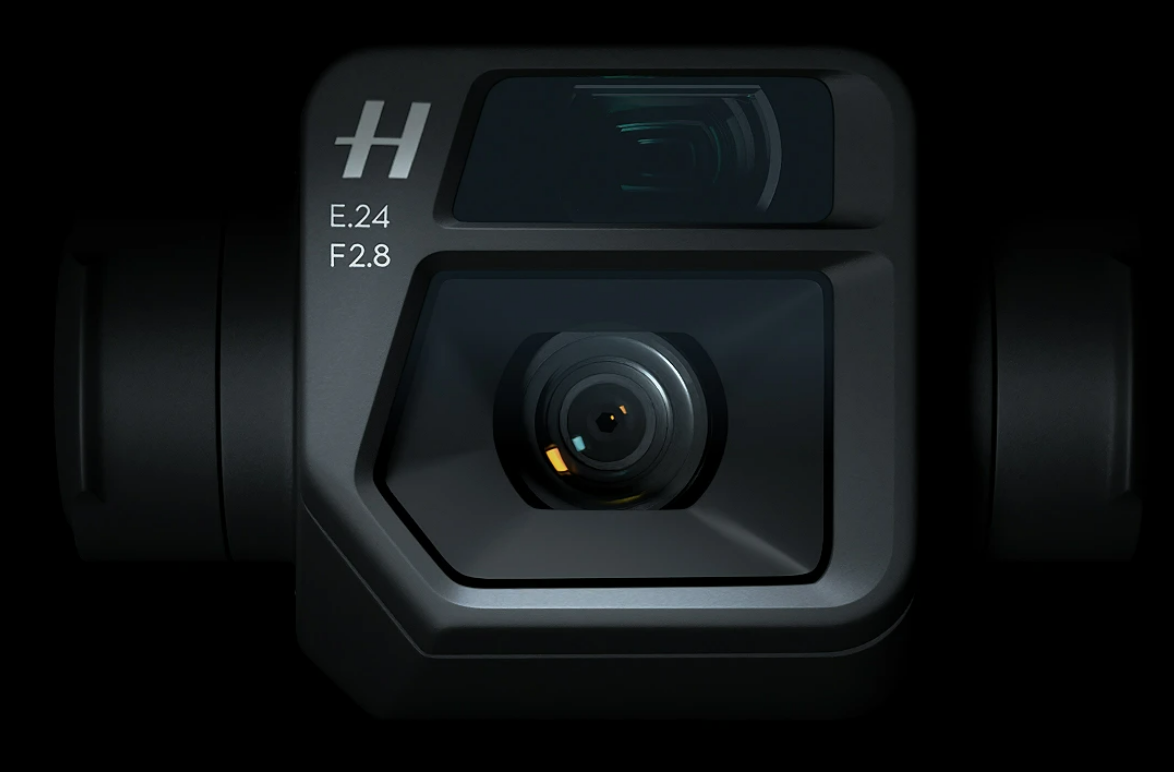
Photo Samples





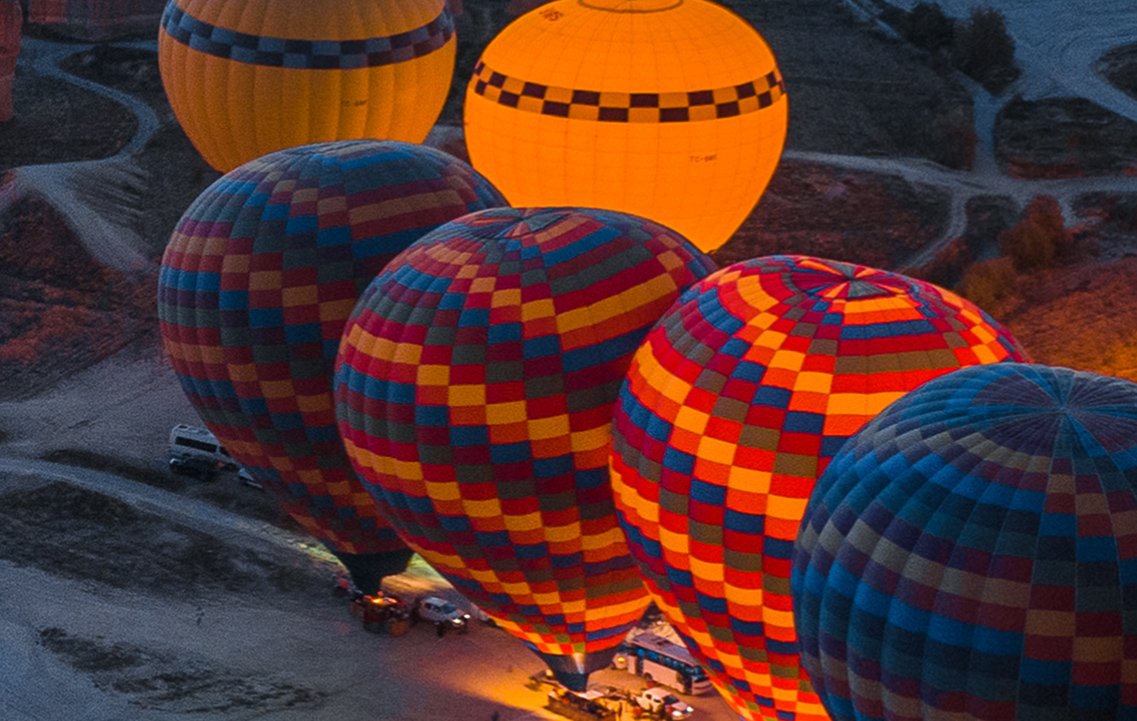
Professional Video Specifications
5.1K Video Recording[1]
DCI 4K/120fps[1]
Apple ProRes 422 HQ[2]
10-bit D-Log
Apple ProRess 422 HQ encoding is only available on the Mavic 3 Cine edition (it also includes a 1TB SSD).
Video Samples
Mavic 3 not only records aerial videos at high resolutions and framerates, it also captures up to 1 billion colors with a 10-bit D-Log color profile. This delivers more natural gradations of sky coloring with more details retained for greater flexibility in post-production.
Mavic 3 Cine supports Apple ProRes 422 HQ encoding [2] with a maximum data rate of 3772Mbps. It also supports a built-in 1TB SSD [3] and 10Gbps lightspeed data cable to further facilitate professional filming and creation.
Tele Camera
28x Hybrid Zoom
162 mm, f/4.4
Activate Explore mode to unlock Mavic 3's second camera – a unique tele camera that lets you effortlessly scout and plan your shots.
When scenes or subjects are far away, use the tele camera to zoom in and save time, or record from a distance without disturbing the subject.
Upgraded O3+ Transmission System
15 km Video Transmission Range [6]
1080p/60fps FHD High-Framerate Live Feed [7]
4G Transmission With the DJI Cellular Transmission Dongle [8]
Extreme-Precision Positioning Technology
Extended Flight Time to See More
Up to 46 minutes of flight time lets you plan flight routes, compose your shots, and capture it all with ease. [5]
Enhanced Safety - Omnidirectional Obstacle Sensing
Mavic 3 helps you to enjoy a collision-free flight so you can focus on getting the best shots possible. Multiple wide-angle vision sensors work seamlessly with a high-performance vision computing engine to sense obstacles in all directions precisely and plan a safe flight route that avoids them. [4]
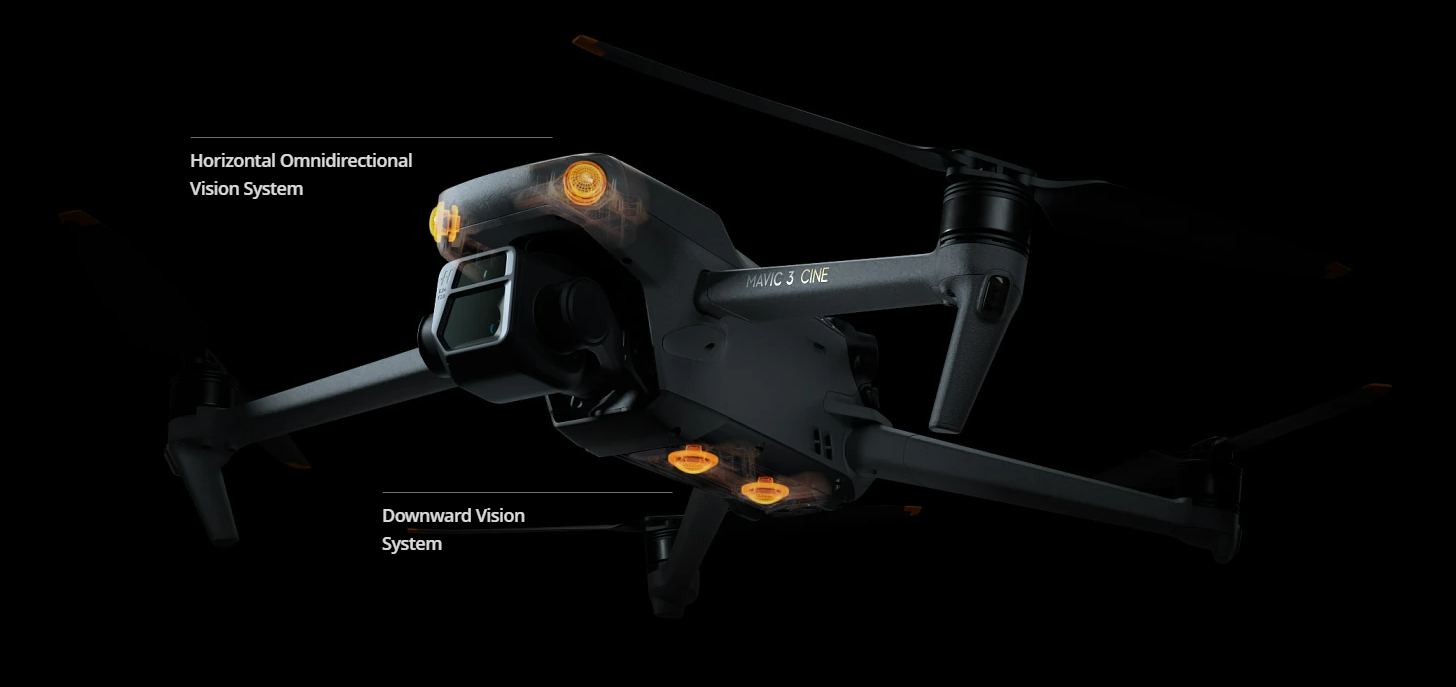
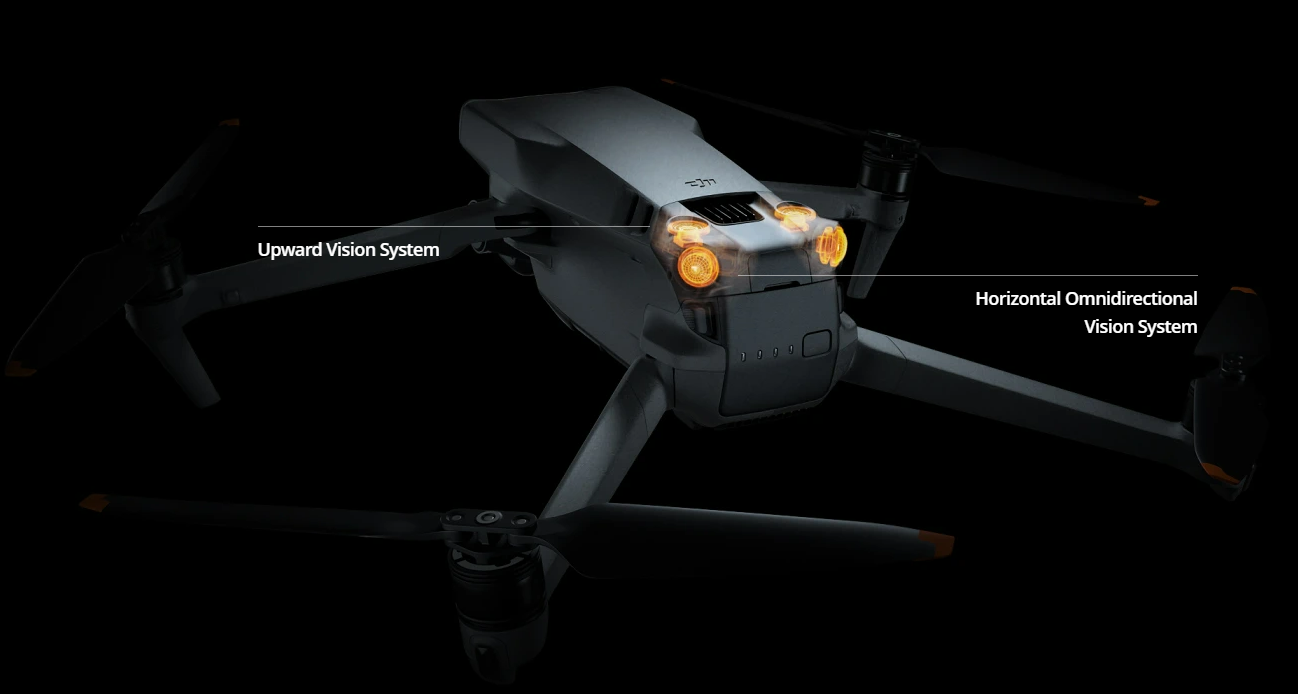
Which is the best for you?
DJI Mavic 3
Flagship drone for advanced shooting
895 g
4/3 CMOS
20 MP, DNG (RAW)
5.1K/50fps, 4K/120fps
46-minute Flight Time (no wind)
O3+, 15km, 1080p/60fps Transmission *
Complete Omnidirectional
ActiveTrack 5.0 **
Advanced RTH
Standard RC
8 GB internal storage
28x Zoom
MasterShots **
APAS 5.0
DJI Mavic 3 Cine
Flagship camera drone for pros
899 g
4/3 CMOS
20 MP, DNG (RAW)
5.1K/50fps, 4K/120fps
46-minute Flight Time (no wind)
O3+, 15km, 1080p/60fps Transmission *
Complete Omnidirectional
ActiveTrack 5.0 **
Advanced RTH
DJI RC Pro (high-bright display)
1TB SSD high-speed internal storage
28x Zoom
MasterShots **
APAS 5.0
Apple ProRes 422 HQ encoding
Mavic 2 Pro
Classic pro-level camera drone
907 g
1'' CMOS
20 MP, DNG (RAW)
4K/30fps
31-minute Flight Time (no wind)
O2, 10km, 1080p/30fps Transmission *
Omnidirectional ***
ActiveTrack 2.0
RTH
Standard RC
8 GB internal storage
FAQ
Compared to DJI Mavic 2, what major upgrades does Mavic 3 have?
What's the difference between the combos?
Is Mavic 3 compatible with the accessories of the Mavic 2 series?
What are the advantages of Mavic 3's imaging system?
How does the omnidirectional obstacle sensing work?
Compared with O3, what improvements does O3+ have?
Footnotes:
* Tested with a production model DJI Mavic 3 in a closed environment in favorable conditions and an unobstructed wireless signal. Actual results may vary depending on environment, usage, and firmware version.
** All videos and photos on this page were taken in strict compliance with local laws and regulations..
1. ActiveTrack is not available at video resolutions higher than 4K or frame rates over 60fps.
2. DJI Mavic 3 Cine supports Apple ProRes 422 HQ and H.264/H.265 encoding, while Mavic 3 only supports H.264/H.265 encoding.
3. Actual available storage space may be reduced due to system configuration. For more details, see the Mavic 3 specs.
4. DO NOT use the aircraft in severe weather conditions including heavy wind exceeding 13.8 m/s, snow, rain, fog, hail, or lightning. DO NOT fly the aircraft 6,000 m (19,685 ft.) or higher above sea level. DO NOT fly the aircraft in environments where the temperature is below -10° C (14° F) or above 40° C (104° F). DO NOT take off from moving objects such as cars or boats. DO NOT fly close to reflective surfaces such as water or snow. Otherwise, the vision system may be limited. When the GNSS signal is weak, fly the aircraft in environments with good lighting and visibility. Low ambient light may cause the vision system to function abnormally. DO NOT fly near areas with magnetic or radio interference. Common source of magnetic or radio interference interferece includes Wi-Fi hotspots, routers, Bluetooth devices, high-voltage lines, large-scale power transmission stations, radar stations, mobile base stations, and broadcasting towers. Be careful when taking off in desert or beach areas to avoid sand entering the aircraft. Fly the aircraft in open areas. Buildings, mountains, and trees may block the GNSS signal and affect the on-board compass.
5. Measured with Mavic 3 flying at a constant speed of 32.4 kph in a windless environment at sea level until the battery reached 0%. Data is for reference only. Please pay attention to the RTH reminder on the DJI Fly app during flight.
6. Unobstructed, free of interference, and when FCC-compliant. Maximum flight range specification is a proxy for radio link strength and resilience. Always follow local rules and regulations and fly your drone within your visual line of sight unless otherwise permitted.
7. Unobstructed and free of interference. Actual resolution may vary depending on the quality of the transmission signal.
8. Sold separately. This function will be available in January of 2022 through firmware updates.
9. Unobstructed, free of interference, and when FCC-compliant. Maximum flight range specification is a proxy for radio link strength and resilience.
10. This function will be available in January of 2022 through firmware updates.


